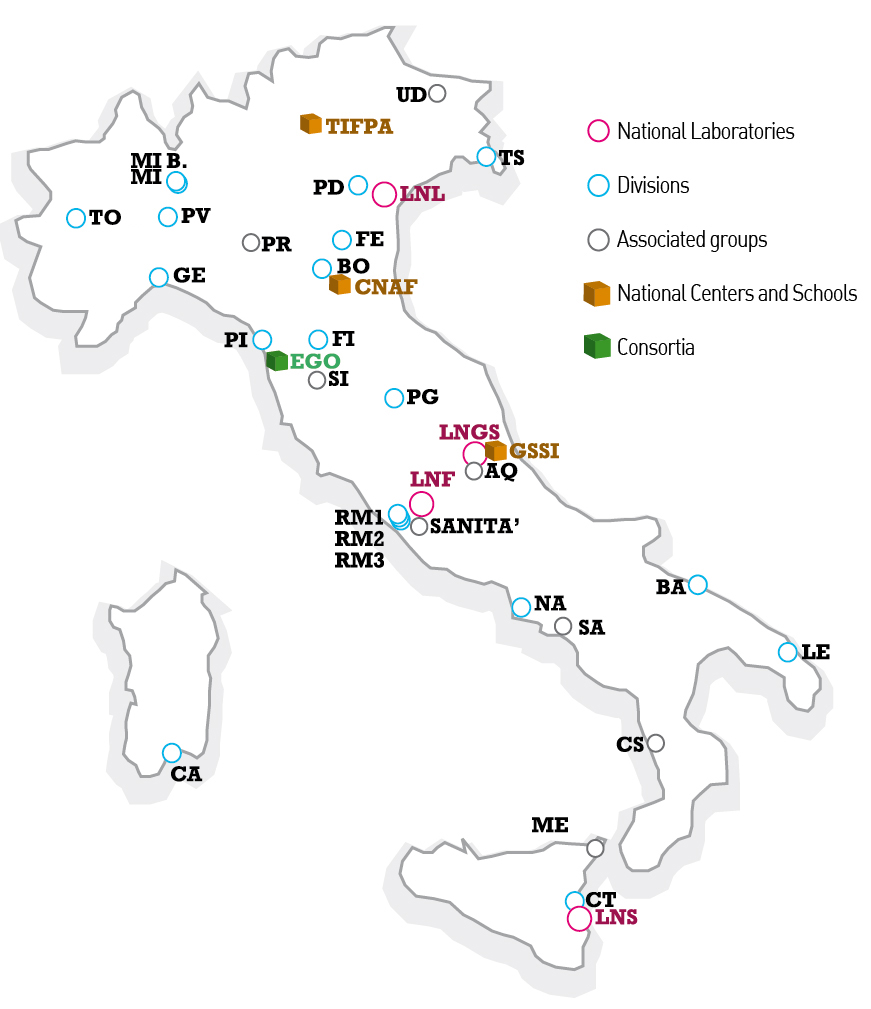NINPHA
National Initiative on the Physics of Hadrons
Abstract
The NINPHA project is dedicated to understanding how hadron structure and phenomenology emerge from the underlying QCD dynamics of confined quarks and gluons. Shedding light on the microscopic mechanisms which lead to the observed masses and spins of hadrons, in fact, will pave the way for a better understanding of confinement and hadronization. To achieve this, NINPHA is developing state-of-the-art phenomenological extractions of maps of partons in momentum space (Transverse Momentum Dependent distributions – TMDs) and in position space (Generalized Parton Distributions – GPDs), including related electromagnetic and gravitational form factors, also exploring advanced approaches to expose the complete information contained in the Wigner distributions (of which TMDs and GPDs are suitable projections).
NINPHA members are at the forefront of extensive phenomenological studies of quark TMDs and GPDs in nucleons and nuclei, and are working to validate proper factorization theorems, evolution equations, and universality issues related to them. Over the next three years, NINPHA plans to extend and refine our understanding of the 3D hadron structure by matching TMD-based formulations at small transverse momenta (compared to the hard scale of the process) to highly accurate perturbative collinear calculations at large transverse momenta, and by improving our knowledge of TMDs and GPDs through robust global fits of fixed-target data (JLab, Compass) and collider data (RHIC, LHC, SLAC, KEK, BEPC). NINPHA will also continue to explore gluon TMDs through single and associated quarkonium production, the orbital angular momentum of partons through GPDs and Wigner distributions, and the dynamics at small parton momenta.
NINPHA activities are also dedicated to the study of the excited hadron spectrum and decays, especially to multiquark states, by means of effective field theories (EFTs), continuum QCD and quark models. Dispersion theory and EFTs applied to data analyses can improve the results extracted from experiments and offer new insight on the nature of exotic hadrons. The calculation of nuclear matrix elements and transport equations will support the theory activities for the NUMEN experiment.
A nonperturbative, relativistic description of bound systems is mandatory in the EIC era, given the expected accuracy in the 3D tomography of light nuclei and hadrons. To this end, the Light-front Hamiltonian dynamics framework, with the most refined nuclear interactions, will be adopted for nuclei, while both Minkowskian continuum-QCD and holographic approaches will be used for hadrons. Numerical studies stemming from previous investigations will also be explored with quantum computing tools.
NINPHA scientists are recognized world experts in their field and have a longstanding tradition of fruitful cooperation with several experimental communities, like JLab and RHIC in the U.S., SPS and LHC at CERN, Belle in Japan and BESIII in China. Moreover, they will continue playing a pivotal role in providing theoretical support to facilities currently under way, like the Electron-Ion Collider (EIC) and the LHCspin project, where the above scientific topics are the pillars of the corresponding physics programs.
